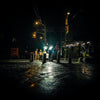What Are Arc Flash Boundaries?

Arc flash isn’t just dangerous. It can be deadly. In fact, of the thousands of electrical accidents and fatalities reported to the Health & Safety Executive (HSE) each year, the majority of them are thought to be directly or indirectly related to arc flash.
It’s very clear to see that anyone working in an area where there is a risk of arc flash should be wearing the necessary PPE to protect themselves. What isn’t quite as clear to see is what is meant by ‘an area where there is a risk’. How far away does a worker have to be from the potential arc source to be out of the ‘danger zone’?
That’s what arc flash boundaries can help us understand.
Exploring Arc Flash Boundaries
When an arc flash occurs, heat and light explode outwards from the arc source, putting those working in the immediate vicinity at risk. Arc flash boundaries are designed to help workers draw an invisible line, separating the highest risk areas from those where there’s less risk. There are four different boundaries that can be applied:
1. Prohibited Boundary: The smallest boundary, located the closest to the arc source.
2. Restricted Boundary: A high-risk area located just outside the prohibited boundary.
3. Limited Boundary: The closest unqualified workers should be to the arc source.
4. Arc Flash Boundary: Defines the lower risk zone outside the limited boundary.
The arc flash boundary is the distance at which a worker can be exposed to an incident energy level no greater than 1.2 cal/cm2 for 0.1 second. While this is the safest of the boundaries, it is still expected that, in a severe event, workers in this area could still receive significant injuries if unprotected, including second degree burns.
What is a ‘Safe’ Distance?
The truth is that there is no set standard for where boundaries should be put in place in relation to a potential arc source. This is because some types of electrical equipment may have the potential to produce more severe arc flash than others.
Typically, the ‘safe’ distance and the arc flash boundary are determined by using the IEEE 1584 Performing Arc Flash Hazard calculation. One of the most common formulas looks like this: DB = [(4.184 × Cf × Ein × (t/0.2) × (610x/EB)]1/x.
Boundaries should be calculated and implemented during an arc flash assessment, and all workers within the boundary should ensure they have the correct arc flash workwear to keep them safe should an arc flash event take place.
-
Posted in
arc flash





